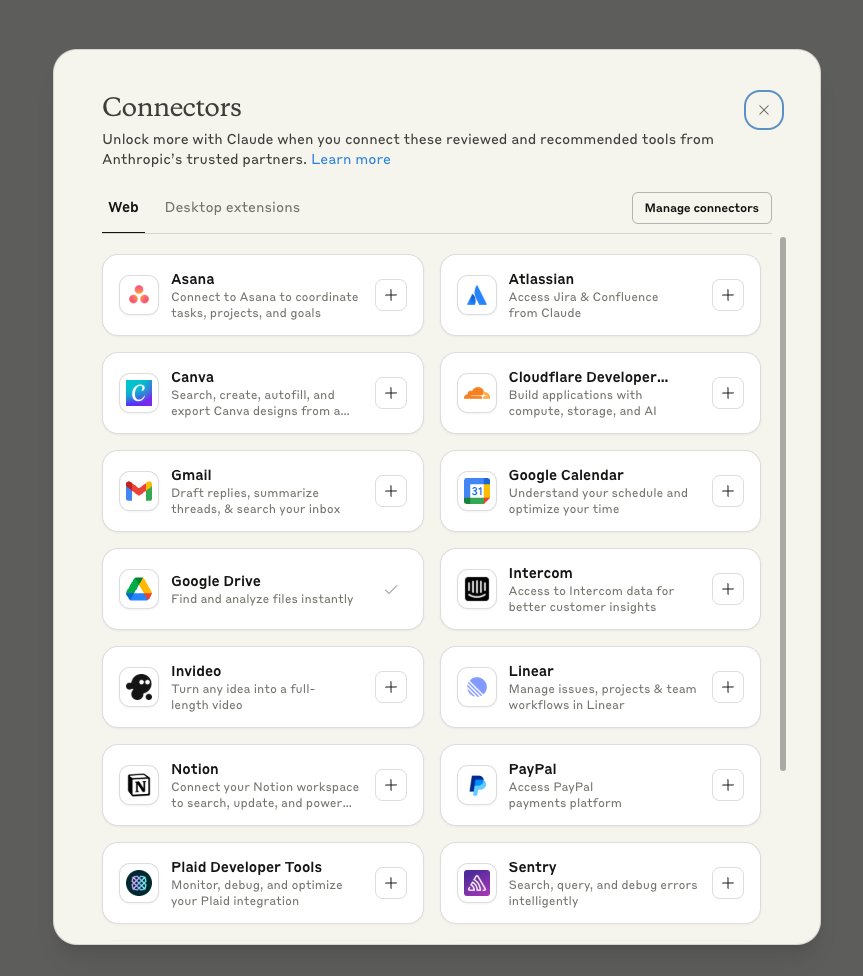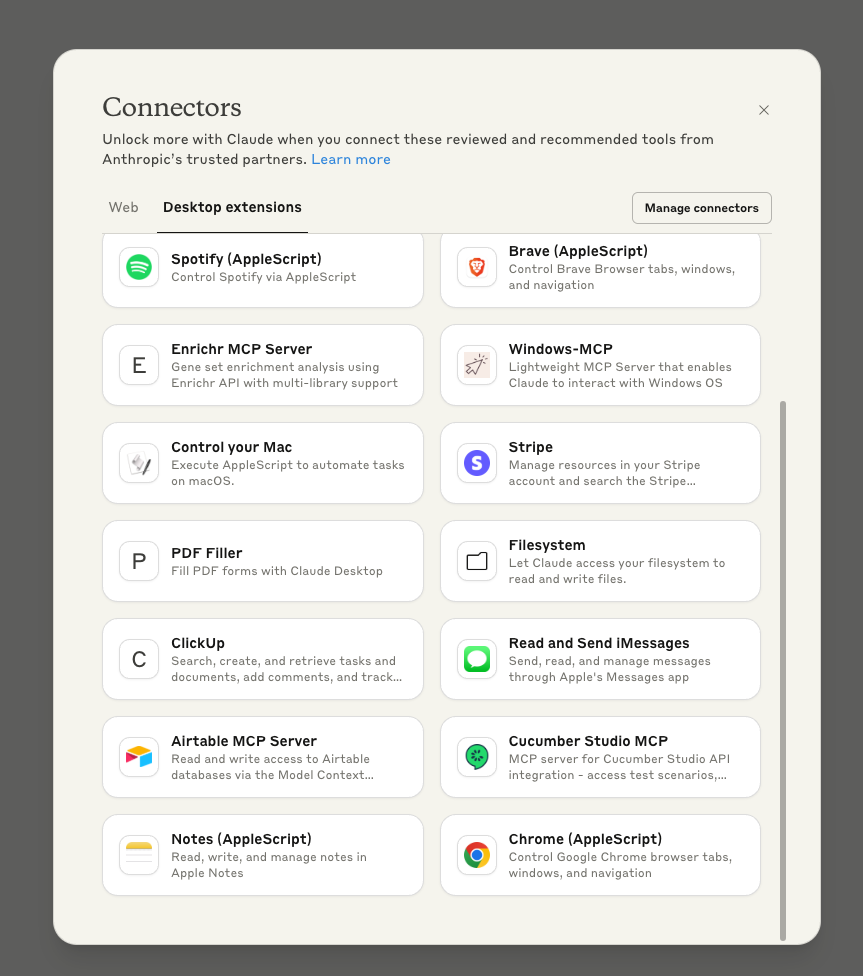The 'USB-C for AI' Has Arrived, and It Will Change How Your Business Operates
Why connected AI is becoming as essential as email, and easier to implement than you think
I've been watching AI evolve for years, and today Anthropic made a significant move. They just launched a directory that makes connecting Claude to your business tools as simple as clicking a button. No coding, no complex setup, just instant access to AI that actually understands your work context.
Here's what happened: They introduced a new directory of tools that connect to Claude through their Model Context Protocol (MCP). Think of it as an app store for AI connections. You can now browse tools like Notion, Stripe, Canva, and Figma, click "Connect," and suddenly Claude has access to your actual project data, payment information, and design files.
Let me explain why this matters. Right now, every time you ask AI for help, you start from scratch. You explain your project, your context, and your constraints over and over. With these new connectors, that changes completely. Instead of asking Claude to "write release notes" and getting a generic template, you can say "write release notes for our latest sprint from Linear," and it pulls your actual tickets to generate publish-ready notes.
The business impact is significant. We're not talking about AI that works in isolation anymore. This is about AI that operates within your existing workflow. Need to turn a Figma design into production code? Connect Figma. Want to analyze customer payment patterns? Connect Stripe. Planning your next quarter? Connect Notion and watch your discussions transform into organized roadmaps.
What's noteworthy is how accessible this makes advanced AI integration. Previously, connecting AI to your tools required technical expertise, API keys, and custom development. Now it's literally one click. Browse the directory at claude.ai/directory, click "Connect," authenticate, and you're done.
For executives, this solves three practical problems. First, it eliminates the technical barrier to AI adoption. Your teams can start using connected AI today, not after a three-month implementation project. Second, it maintains your existing security—you control what Claude can access through standard authentication. Third, it turns AI from a standalone tool into something that enhances every tool you already use.
The shift happening here is from AI that gives advice to AI that takes action within your actual work environment. Instead of copying and pasting between systems, you're working with an AI that sees what you see and can operate where you operate.
What I find most practical about this is that it democratizes AI integration. Small businesses can now have the same connected AI capabilities as enterprises. If your company uses any of these standard tools, you can enhance them with AI immediately.
We're entering a time when the competitive advantage isn't just using AI, it's how deeply AI integrates with your actual work. These tool connections aren't just features; they're a fundamental change in how AI can contribute to your business. Companies that understand this distinction will move faster and work smarter than those still treating AI as a separate tool.
The question isn't whether to explore these connections. It's which of your daily friction points could disappear with AI that actually understands your business context.
If you enjoyed this article, please subscribe to my newsletter and share it with others! Looking for help to use AI in your organization? Wondering where to start or what tools to use? Reply directly or reach out: steve@intelligencebyintent.com



